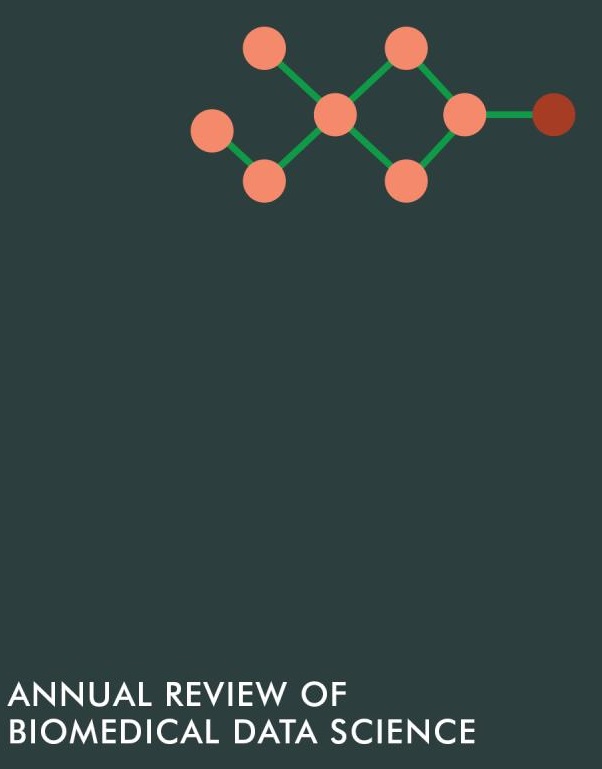整合蛋白质结构和群体规模的DNA序列数据,用于疾病基因发现和变异解释。
IF 7
Q1 MATHEMATICAL & COMPUTATIONAL BIOLOGY
Annual Review of Biomedical Data Science
Pub Date : 2022-05-04
DOI:10.1146/annurev-biodatasci-122220-112147
引用次数: 0
摘要
在过去的20年里,用于获取人类基因组中蛋白质结构和遗传变异信息的实验和计算技术取得了巨大进步,产生了大量新的数据资源。在这篇综述中,我们讨论了这些进展,以及确定遗传变异对蛋白质功能影响的新方法。我们专注于将人类遗传变异整合到蛋白质结构中以发现疾病关系的新方法的潜力,包括发现癌症相关蛋白质的突变热点,在常见复杂疾病的蛋白质区域内定位蛋白质改变变异,以及评估孟德尔性状的未知意义变异。我们期望整合这些数据源的方法将在疾病基因发现和变异解释中发挥越来越重要的作用。预计《生物医学数据科学年度评论》第5卷的最终在线出版日期为2022年8月。修订后的估计数请参阅http://www.annualreviews.org/page/journal/pubdates。本文章由计算机程序翻译,如有差异,请以英文原文为准。
Integration of Protein Structure and Population-Scale DNA Sequence Data for Disease Gene Discovery and Variant Interpretation.
The experimental and computational techniques for capturing information about protein structures and genetic variation within the human genome have advanced dramatically in the past 20 years, generating extensive new data resources. In this review, we discuss these advances, along with new approaches for determining the impact a genetic variant has on protein function. We focus on the potential of new methods that integrate human genetic variation into protein structures to discover relationships to disease, including the discovery of mutational hotspots in cancer-related proteins, the localization of protein-altering variants within protein regions for common complex diseases, and the assessment of variants of unknown significance for Mendelian traits. We expect that approaches that integrate these data sources will play increasingly important roles in disease gene discovery and variant interpretation. Expected final online publication date for the Annual Review of Biomedical Data Science, Volume 5 is August 2022. Please see http://www.annualreviews.org/page/journal/pubdates for revised estimates.
求助全文
通过发布文献求助,成功后即可免费获取论文全文。
去求助
来源期刊
CiteScore
11.10
自引率
1.70%
发文量
0
期刊介绍:
The Annual Review of Biomedical Data Science provides comprehensive expert reviews in biomedical data science, focusing on advanced methods to store, retrieve, analyze, and organize biomedical data and knowledge. The scope of the journal encompasses informatics, computational, artificial intelligence (AI), and statistical approaches to biomedical data, including the sub-fields of bioinformatics, computational biology, biomedical informatics, clinical and clinical research informatics, biostatistics, and imaging informatics. The mission of the journal is to identify both emerging and established areas of biomedical data science, and the leaders in these fields.

 求助内容:
求助内容: 应助结果提醒方式:
应助结果提醒方式:


